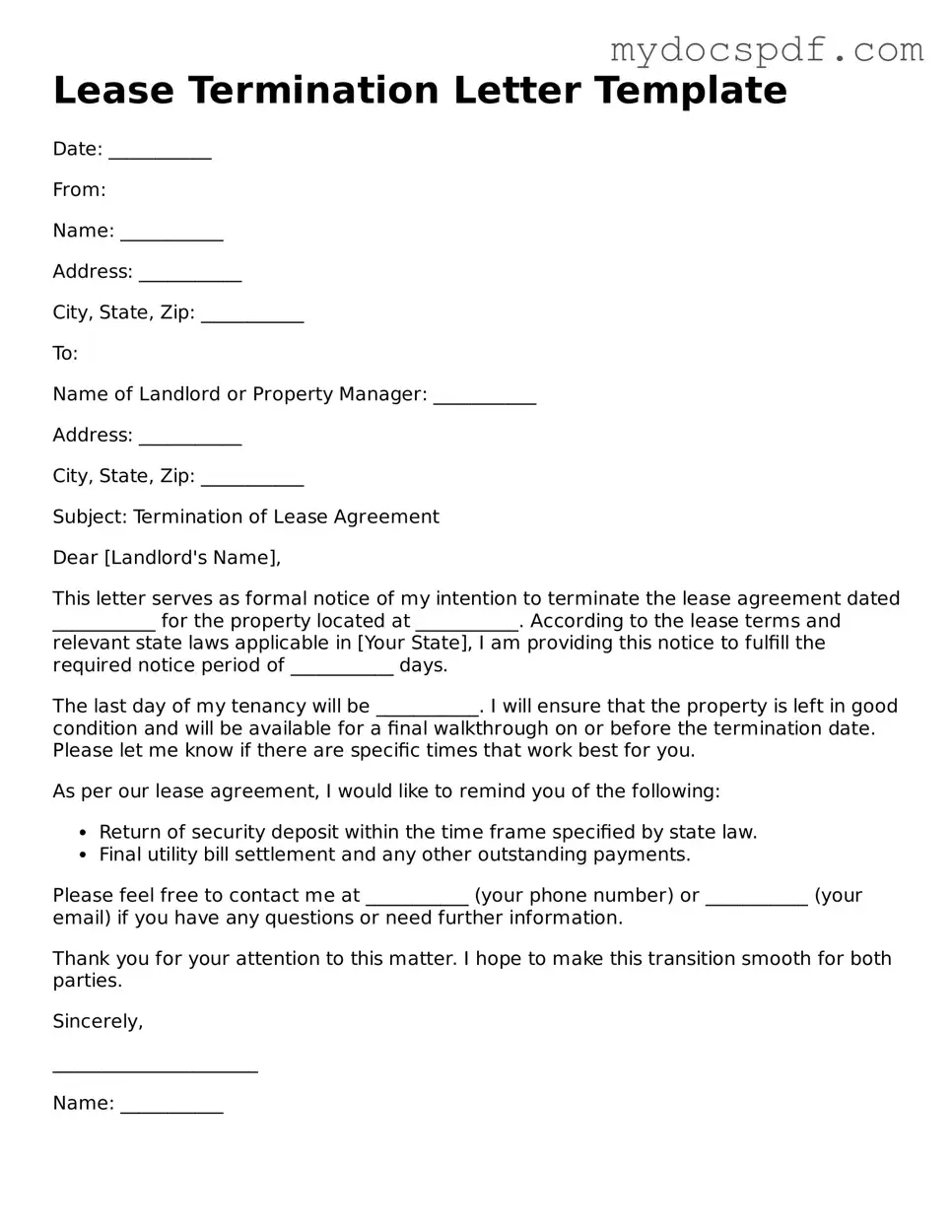Lease Termination Letter Template
Date: ___________
From:
Name: ___________
Address: ___________
City, State, Zip: ___________
To:
Name of Landlord or Property Manager: ___________
Address: ___________
City, State, Zip: ___________
Subject: Termination of Lease Agreement
Dear [Landlord's Name],
This letter serves as formal notice of my intention to terminate the lease agreement dated ___________ for the property located at ___________. According to the lease terms and relevant state laws applicable in [Your State], I am providing this notice to fulfill the required notice period of ___________ days.
The last day of my tenancy will be ___________. I will ensure that the property is left in good condition and will be available for a final walkthrough on or before the termination date. Please let me know if there are specific times that work best for you.
As per our lease agreement, I would like to remind you of the following:
- Return of security deposit within the time frame specified by state law.
- Final utility bill settlement and any other outstanding payments.
Please feel free to contact me at ___________ (your phone number) or ___________ (your email) if you have any questions or need further information.
Thank you for your attention to this matter. I hope to make this transition smooth for both parties.
Sincerely,
______________________
Name: ___________
